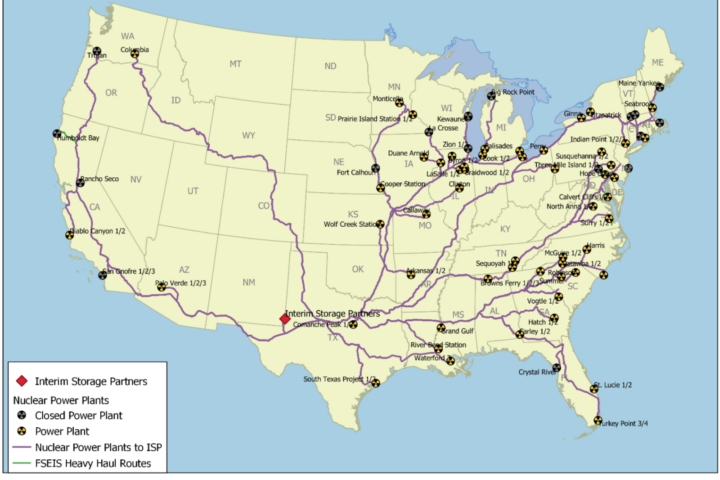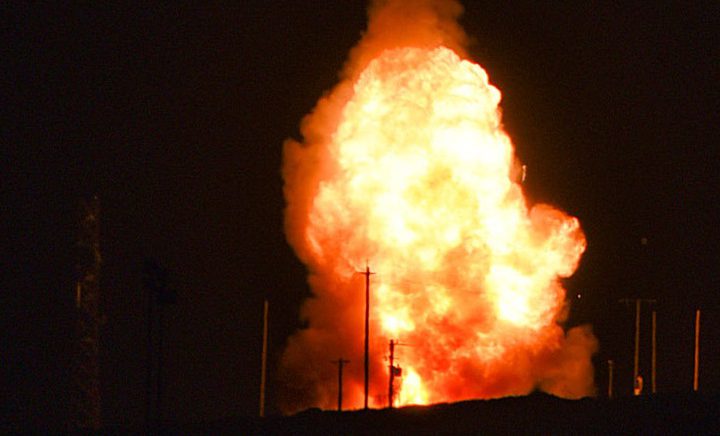
A must read:
How US Nuclear Force Modernization is Undermining Strategic Stability:
The Burst-Height Compensating Super-Fuze
By Hans M. Kristensen, Matthew McKinzie, Theodore A. Postol
https://web.archive.org/web/20180623204508/https://thebulletin.org/how-us-nuclear-force-modernization-undermining-strategic-stability-burst-height-compensating-super10578
Excerpt:
The US nuclear forces modernization program has been portrayed to the public as an effort to ensure the reliability and safety of warheads in the US nuclear arsenal, rather than to enhance their military capabilities. In reality, however, that program has implemented revolutionary new technologies that will vastly increase the targeting capability of the US ballistic missile arsenal. This increase in capability is astonishing- boosting the overall killing power of existing US ballistic missile forces by a factor of roughly three- and it creates exactly what one would expect to see, if a nuclear-armed state were planning to have the capacity to fight and win a nuclear war by disarming enemies with a surprise first strike.
This is a super outstanding analysis by Mssrs. Kristensen, McKinzie and Postol. I’m no doubt naïve, but I’m hoping it will have some real political and geopolitical impact.
And how in keeping with the 2013 Defense Dept. guidance, which Kristensen was the first to point out to me. It helps to demonstrate that the American public doesn’t really have nuclear “deterrence” as claimed for a half-century. Instead, the U.S. has always had a nuclear war-fighting strategy, as first demonstrated in Hiroshima and Nagasaki.
To quote:
The new guidance requires the United States to maintain significant counterforce capabilities against potential adversaries. The new guidance does not rely on a “counter-value’ or “minimum deterrence” strategy.
Report on Nuclear Implementation Strategy of the United States Specified in Section 491 of 10. U.S.C., Department of Defense, June 2013, page 4 (quotation marks in the original) http://www.globalsecurity.org/wmd/library/policy/dod/us-nuclear-employment-strategy.pdf
As Kristensen, McKinzie and Postol point out, the geopolitical risks in radical improvements to U.S. nuclear warfighting capabilities are enormous. A secondary concern I’d like to point out is the risk to nuclear weapons reliability posed by intentionally introducing major changes to an extensively tested stockpile.
The Pantex Plant (final assembly site for US nuclear weapons) has a newsletter called The Pantexan (duh!). I recall circa 2009 that it had an article concerning the fact that the MC 4700 “super fuze” that was being installed in the then-ramping up W76 Life Extension Program had initial design and production problems. As the article boasted, those defects were detected and swiftly corrected.
However, the principle remains that introducing intentional changes can undermine confidence in stockpile reliability. The grand irony is that the Stockpile Stewardship Program has been lavishly funded because of the official rationale of preserving stockpile reliability, but I believe it has been a Trojan horse all along for using Life Extension Programs to create new military capabilities (and which the excellent analysis above reinforces).
[I have tried a few times to again find that Pantexan article, unfortunately without success.]
The above graph from the 1993 Sandia Stockpile Life Study shows that the supermajority of nuclear weapons defects occur within the first 5 years from the First Production Unit. Marylia Kelley (Executive Director of TriValley CAREs that watchdogs Livermore Lab ) and I met with Vic Reis, commonly regarded as the “father” of the Stockpile Stewardship Program, in 2004 or 2005. He explicitly said to us that the whole purpose of the Stockpile Stewardship Program was for the “other side of the bathtub curve”, i.e. when defects were going to multiply because of aging.
Guess what? That hasn’t happened, given long-established stockpile surveillance, rigorous maintenance and well-understood replacement of “limited life components” (e.g., batteries, neutron generators, tritium).
Indeed, the 1993 Sandia Stockpile Life Study itself said
We undertook this study to understand how long nuclear weapons last. We quickly learned that this is the wrong question. It is clear that, although nuclear weapons age, they do not wear out; they last as long as the nuclear weapons community (DOE and DOD) desire. In fact, we can find no example of a nuclear weapon retirement where age was ever a major factor in the retirement decision.
The more significant question is “what does it take to sustain a weapon while it is in the stockpile?”… Failures, defects, and aging problems have been rare…
[Available at https://nukewatch.org/facts/nwd/Sandia_93_StockpileLife.pdf]
So again, I think the Stockpile Stewardship Program has been a ruse to indefinitely preserve U.S. nuclear weapons while giving them new military capabilities. And now we have the trillion dollar-plus “modernization” to vastly expand U.S. nuclear warfighting capabilities.


